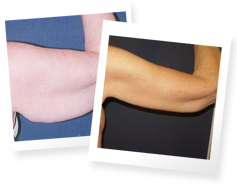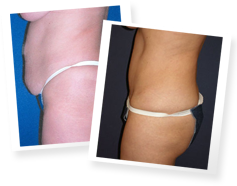What is otoplasty?
Many patients experience issues regarding the size, proportion, and shape of their ears. Dr. Alan Serure performs ear surgery or otoplasty to improve the physical appearance of the patient’s ears. In addition to enhancing the shape and position of the ear, an otoplasty procedure is also used to correct structural defects of ear that may have been present at birth or brought about by an injury.
What are the benefits of otoplasty?
With otoplasty, patients obtain natural looking ears that provide a perfect balance to their facial features, enhancing their overall appearance. Misshapen ears are often the cause of an awkward and embarrassing phase in a person’s life, both in childhood and adulthood. Otoplasty is recommended for patients who have usually large ears, protuberant or disfigured ears, or as a corrective procedure for adults who have had previous ear surgery but are not satisfied with the results.
Who can receive otoplasty?
Otoplasty may be recommended for children, five years old and above, who already have suitably developed ear cartilages that can withstand the surgical correction. The children must also be verified to be in optimal health, with no underlying illnesses or persistent and untreated ear infections. The recommended minimum age for otoplasty is five years old because, ideally, these children will be able to follow the instructions.
For older patients, the primary requirement is that they have a clean bill of health with no life-threatening conditions or other conditions that can interfere with the healing process. They should ideally be non-smokers and have realistic goals for the procedure.
What happens during otoplasty?
Patients are administered general anesthesia or sedation by a board-certified MD anesthesiologist. Incisions will be made at the back of the ear to give Dr. Serure access to the underlying structures and allow them to sculpt the cartilage so that they can adjust the measurements of the anti-helical fold, or the C-shaped ridge just inside the edge of the ear, and the conchal bowl, or the large concave part of the outer ear. Adjusting the size of these areas will effectively reduce the size of the ears and reduce their protrusion. If an incision is made at the front part of the ear, it will be made along the natural creases and folds to conceal them. Internal sutures will be used to secure the reshaped cartilage and hold it in place to maintain the ear’s new form.
What happens after ear surgery?
The patient will normally feel some discomfort, redness, swelling, and bruising after the surgery and this can be managed with pain medication. Otoplasty is an outpatient procedure and patients will be able to go home immediately after their appointment, however, their bandages must not be removed for several days to ensure that the correction heals properly. After the swelling and bruising disappears, the newly shaped ears will appear to be of a more suitable size and closer to the head than they were prior to the surgery. Scarring will be very minimal because the incisions have been positioned so that they are well hidden along the natural creases and folds of the ear. A nighttime head band is worn for two weeks to protect the ears while sleeping. No contact sports or strenuous exercise for four weeks.
Brow Lift | Cheek Reduction | Chin Augmentation | Eyelid Surgery | Face Lift | Fat Transfer | Mini Face Lift | Otoplasty | Rhinoplasty






